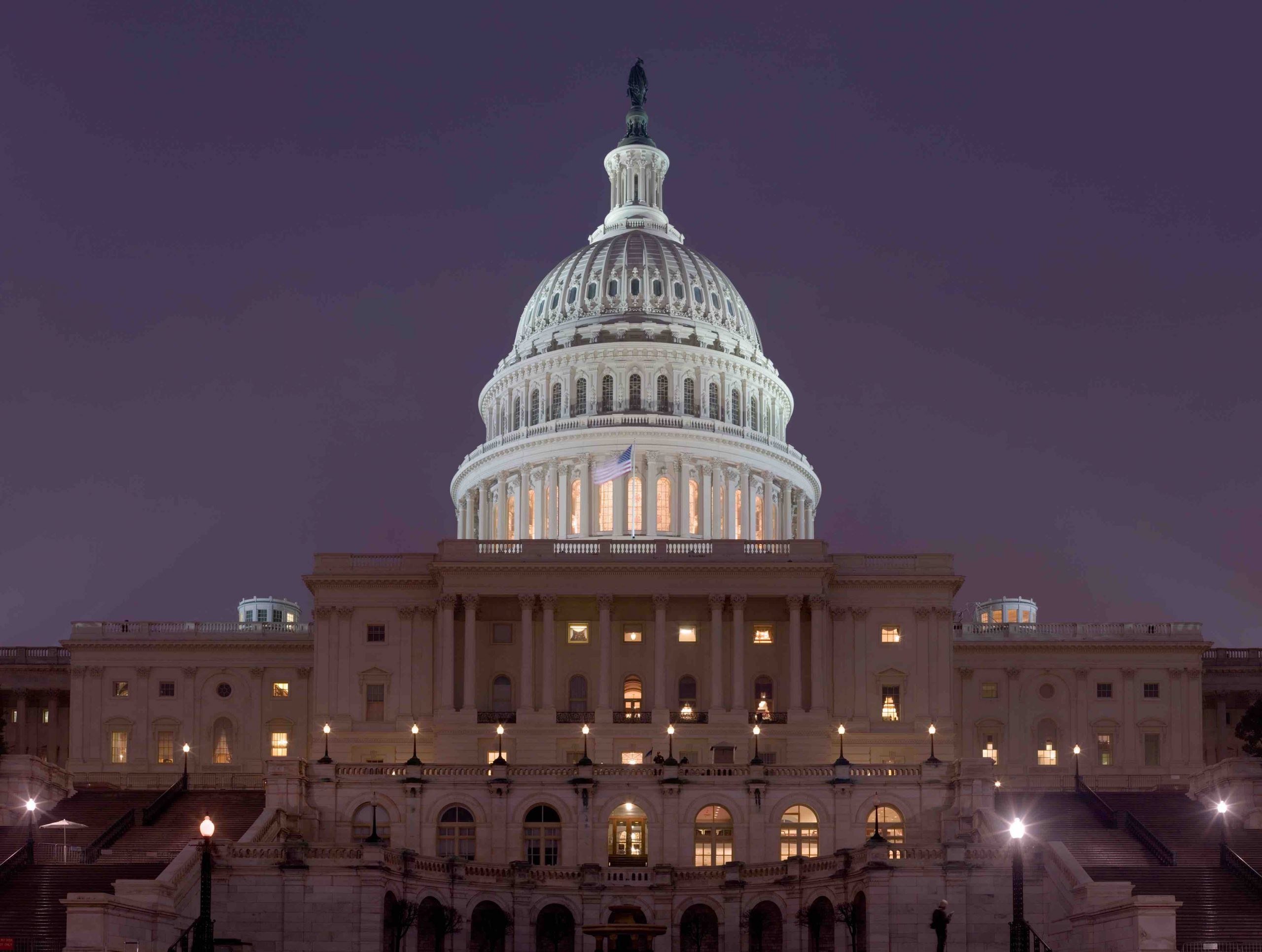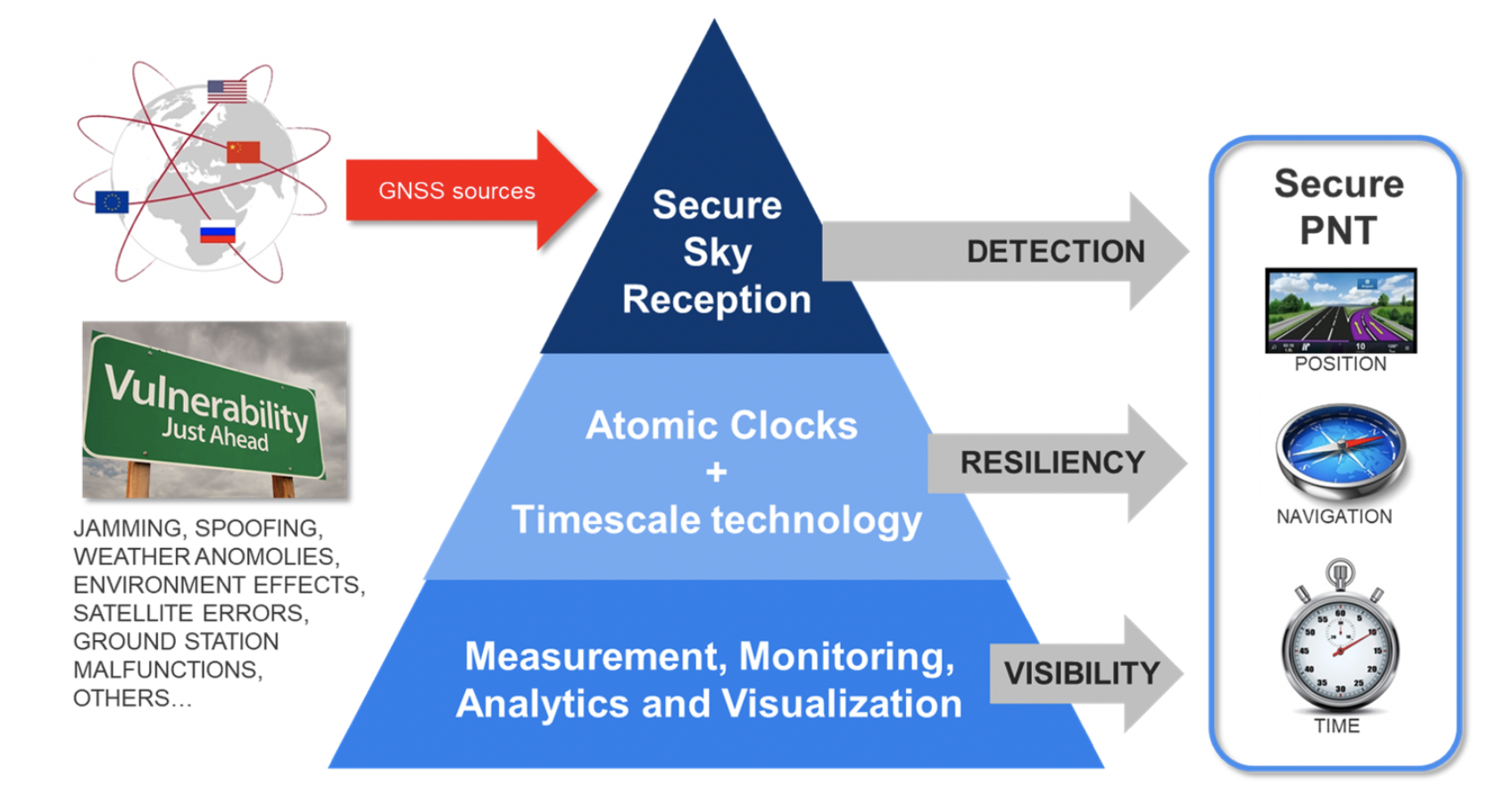One hundred days into the administration and the federal civil service crew has set the stage for the Biden team on the tough Positioning, Navigation, and Timing (PNT) issues they face: the Ligado debacle, interference concerns and a troubling lack of system redundancy or resiliency.
Reports indicate that the Department of Transportation (DOT)’s new Acting Assistant Secretary for Research and Technology (OST-R), Dr. Robert Hampshire, an electrical engineer, is a quick study who “gets” it. Hampshire will also serve as the co-chair of the Executive Steering Group of the National Executive Committee for Space-Based PNT. Now that he’s been educated on the current issues, what’s next?
Let’s Talk Toughen
The Trump-era Space Policy Directive-7 directs the DOT to “authenticate” GPS, potentially meaning both data and signals. According to Karen Van Dyke, Director of DOT OST-R’s Office of PNT & Spectrum Management, toughening receivers remains a key priority. Widespread GPS jamming, spoofing and interference creates vulnerabilities for critical infrastructure in the homeland and for troops on the battlefield.
Russia recently stepped up its electronic signature in contested areas in east Ukraine, jamming coalition equipment. This problem is not new for the military, but the fix remains years away, according to a January 2021 Government Accountability Office (GAO) report (think: 2028).
For almost twenty years, the Department of Defense (DOD) has engaged in a multi-billion dollar GPS modernization and sustainment effort, the keystone of which is to add a more powerful and encrypted anti-jam, anti-spoof cybersecure military (M)-code GPS capability. M-code use requires M-code broadcast-capable satellites with a ground control system and user equipment for troops to receive it.
In 2005, the Air Force launched the first M-code capable GPS satellite, but has not completed development of GPS ground control software upgrades and lacks the necessary user equipment. The report reveals the DOD remains “uncertain of the timeframes, extent, and cost of the effort needed” to complete development and operational testing, and then to widely integrate, M-Code cards and receivers into various aircraft, ships, vehicles, and other weapon systems.
M-Code is a military-only toughening solution. According to Bradford Parkinson (Colonel, USAF Ret), forty years ago he and his colleagues validated a dual-use solution to counter jamming: the multi-element antenna.
“With the stroke of a pen to allow the sale of such multi-element antennas, companies will produce them. Users could add them on military or civilian ships, airplanes, trucks and anywhere else where we could encounter a spoofing or jamming threat to productivity, safety, or general usage.”
— Brad Parkinson, 1st Vice-Chair, National PNT Advisory Board
Referred to by some as “The Father of GPS” and currently the 1st vice-chair of the National Space-Based PNT Advisory Board, Parkinson explained, “In 1978, we integrated a multi-element antenna in an airplane and flew it over a ten-kilowatt jammer (100 times the power of a microwave oven). The GPS antenna created a null towards the jammer and amplified the correct GPS signal. The receiver operated as if there was no jamming.”
But the law has been the roadblock in implementing antennas with more than four elements. A 2016 State Department export controls rule on military GPS/GNSS receivers that updated the International Traffic in Arms Regulations (ITAR) regulations precludes selling greater than four-element antennas.
Parkinson opines, “They did this because an enemy may exploit such capability. Perhaps true, years ago, but now potential enemies already understand these techniques and modern digital devices can be quickly assembled to affordably realize such designs. Thus, the restriction is only hindering the civil users from increasing GPS/PNT robustness against spoofing and jamming threats.
“With the stroke of a pen to allow the sale of such multi-element antennas, companies will produce them. Users could add them on military or civilian ships, airplanes, trucks and anywhere else where we could encounter a spoofing or jamming threat to productivity, to safety, or to general usage.”
Will Dr. Hampshire, the new DOT Assistant Secretary, go to bat for this solution? Only time will tell.
Complementary Augmentation
Speaking of tim(ing), PNT augmentation also ranks high on DOT’s dance card. Van Dyke elaborates, “Augment is the complementary PNT aspect: what other tech can you integrate and take advantage of to use for positioning or timing functions in the absence of GPS, such as physically impeded environments indoors or underground or electronically impeded environments such as jamming or spoofing.”
DOT’s Volpe Center, which falls under the OST-R Assistant Secretary, selected 11 candidate technical readiness level (TRL)-qualified vendors for demos of various technologies. The resultant January 2021 report contained four principal findings.
• All TRL-qualified vendors (TRL 6 or higher) demonstrated some PNT performance of value.
• Only one, NextNav LLC, based in Sunnyvale California, demonstrated PNT performance in all use case scenarios. These use cases were: timing performance, positioning performance, timing-terrestrial broadcast; PNT-terrestrial broadcast; timing-broadcast; and PNT broadcast. NextNav’s Metropolitan Beacon System (MBS) geolocation platform, a multilateration 2D terrestrial-based P&T synchronized network of transmitters which revert to non-sat cesium clock or time-over-fiber timing sources in GPS-denied environments, came out on top.
• Neither of two eLORAN technology, a low-frequency radionavigation system that operates in the frequency band of 90 to 110 kHz built on internationally standardized Loran-C, succeeded in the Static Basement Timing scenario, designed to collect time transfer data simultaneously from all participating vendor technology over a 60-minute period at a single location indoors and below grade.
Despite this, Parkinson, who also chaired the Federal Aviation Administration’s study of the technology in 2000, still believes eLORAN to be a valuable back up. “It does not cost much money and is a deterrent to spoofing and jamming. It does not even come close to being a replacement for a 3D system, but it’s still a good idea. There are also solutions using existing low earth satellites that have shown significant capability indoors.”
However, years ago, residual LORAN stations were dismantled and would now require reconstruction. This ties into the report’s next finding that deployment effort and coverage (infrastructure per unit area) are significant cost factors.
• The last finding was that R-Mode ranging in the MF band, did not meet the minimum TRL of 6.
Here are the January 2021 Complementary PNT and GPS Backup Technologies Demonstration Report’s final recommendations:
• DOT should develop system requirements for PNT functions that support safety-critical services.
• DOT should develop standards, test procedures, and monitoring capabilities to ensure that PNT services, and the equipage that utilizes them, meet the necessary levels of safety and resilience identified in Recommendation 1.
Van Dyke says her team now focuses on next steps from these recommendations, particularly in terms of performance monitoring and standards and stress-testing complimentary PNT technologies.
Protecting Against…Ligado
Van Dyke described the Protection Pillar of PNT as “protecting spectrum against harmful interference…like Ligado.”
In April 2020, the Federal Communications Commission (FCC) authorized Ligado to deploy a low-power terrestrial nationwide network in the 1526-1536 MHz, 1627.5-1637.5 MHz, and 1646.5-1656.5 MHz portions of its license in the mobile satellite services (MSS) L-band allocation. The National Telecommunications and Information Administration (NTIA) filed a Petition for Stay and Reconsideration on behalf of virtually every government department, including the DOT.
In December, in support of its petitions, the NTIA provided the FCC an adjacent band interference report which established GPS interference. A month later and on the eve of the Trump administration’s exodus, the FCC denied the Motion for Stay.
The final answer on the Recon remains pending, as does the FY21 NDAA-mandated and DOD-contracted National Science Academy independent review of the problem. Rumor has it those contracts have been let, which starts the 270-day clock to report back to Congress.
Meanwhile, Ligado filed its FCC-required quarterly status report at the end of March. The company states that the feds continue to stonewall them on requests for information on which of their GPS devices that may experience harmful interference require repair or replacement.
Ligado also revealed a collaboration with Tokyo-based Rakuten Mobile, Inc., a company responsible for mobile communications including mobile network operator and mobile virtual network operator businesses. In February, the companies announced their agreement to partner and seek other industry end users for cloud-native 5G mobile private network solutions. The report states the two are specifically exploring “the combination of Ligado’s L-band spectrum with the Open Radio Access Network technology enabled by the Rakuten.
Communications Platform
As Ligado forges ahead, many are frustrated with the lack of movement on an issue of such grave importance. Former Deputy Assistant Secretary for Research and Technology, DOT, Diana Furchtgott-Roth, now an adjunct professor at George Washington University, recently penned an Op-Ed in the Washington Post blasting what she calls the FCC’s “misguided decision that now endanger(s)…the entire GPS system.” It is noteworthy, she said, that in an unprecedented move, the National Telecommunications and Information Administration on behalf of the entire executive branch, asked the FCC to reconsider.
In an interview, Furchtgott-Roth clarified that “Ligado’s ground-based service would do an immense amount of damage across the entire economy by reducing the reliability of GPS—which supports emergency workers, aviation, construction, agriculture, and average Americans trying to find their way in their everyday activities.”
Parkinson shares these concerns. “The FCC continues to avoid correcting some really bad decisions in the interest of no one, other than investors who made a bad investment and need a bailout and the lobbyists that support them. This Ligado license is appalling.”
Were the FCC to continue to allow Ligado to move ahead with its MSS plan, the cost may be potentially staggering in terms of the dollars needed to mitigate anticipated wide-spread GPS interference. The DOD estimates billions.
The Price of Admission
Other than the Ligado threat that merely would require the FCC to reverse its decision, the final solutions to these other problems will require significant funding. In late March, President Biden submitted a $2 trillion-plus infrastructure package that includes $50B for improving infrastructure resilience, $100B to build high-speed broadband and $300B for R&D and manufacturing of critical tech.
Will any of this drop to DOT for PNT or GPS? In a March 31st speech on the related American Jobs Plan, the POTUS may have signaled his support for the cause when he said, “GPS helped us find each other.” The House and Senate Democrats are projected to release infrastructure bills this month, but there’s already been push back on the other side of the aisle.
The consolidated budget for both defense and transportation finalized at the end of December came in below asking price. Even though Congress funded DOD GPS programs at $1.8B, it came in $18M below the ask (note-the money flows now through the Space Force instead of the Air Force). Lawmakers also failed to provide specific DOT funding to cover civil requirements in the DOD GPS program. They did earmark $5M to continue PNT complementary service demos and $2M to fill staff vacancies.
As vacancies go, although DOT Assistant Secretary Hampshire is on the job, a few other crucial PNT leadership positions remain TBD.
And so the T.A.P. dance continues.





